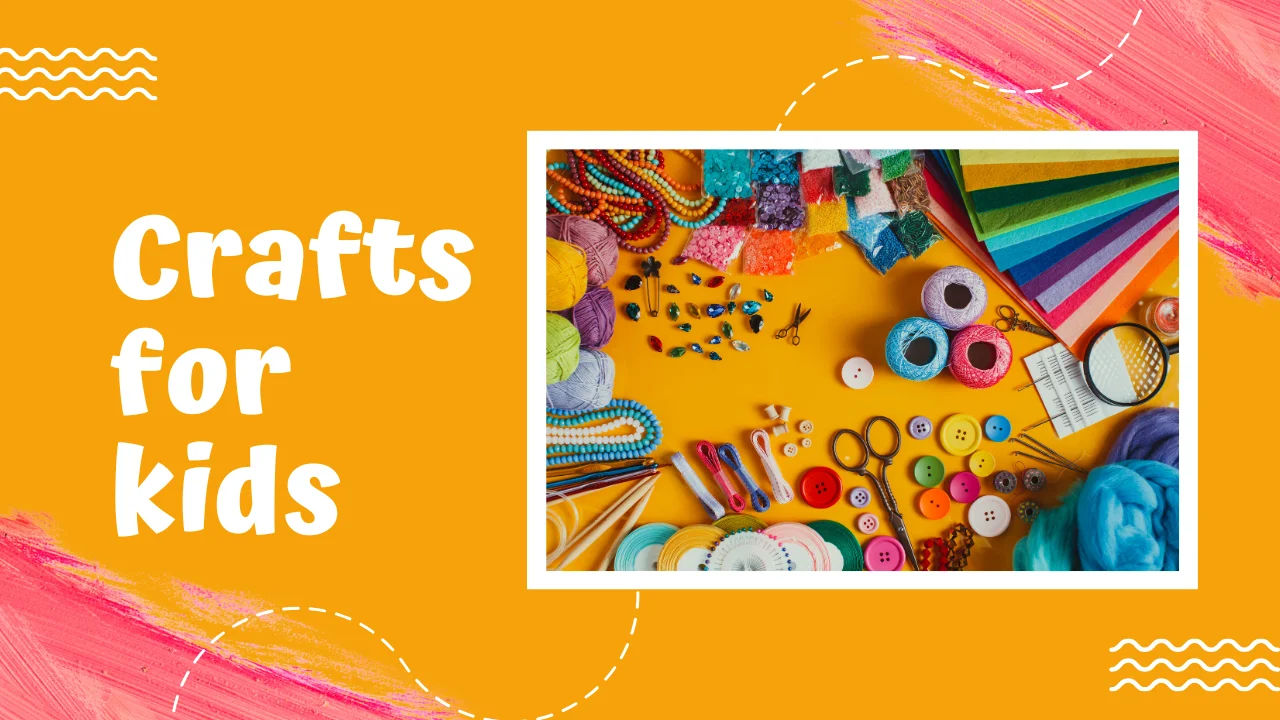Children love to explore their world through play and hands-on activities. One of the best ways to do this is through crafts for kids. These activities allow children to express creativity, build fine motor skills, and develop confidence. At the same time, they have fun and stay engaged for hours.
Also Read: Increditools: Expert Analysis on Emerging Tech Solutions
What are Crafts for kids?
Crafts for kids are fun, hands-on activities that allow children to create art or objects using simple materials like paper, glue, and colors. These activities help improve their motor skills, creativity, and focus. Kids can make things like paper animals, handmade cards, or painted rocks. Crafts also give children a chance to express their thoughts and emotions in a fun way. They often learn patience and problem-solving while crafting. Many schools and parents use crafts to make learning more engaging. Overall, crafts are a joyful way for kids to learn and grow through creativity.
Why Crafts Matter in Early Childhood Development
Crafts for kids are more than just play. They help develop hand-eye coordination and boost problem-solving abilities. Kids learn patience and concentration while completing each project. They also build confidence as they see their work take shape.
Crafting also encourages language development. As children talk about their creations, they learn to describe actions and feelings. This helps them grow socially and emotionally.
Types of Crafts Suitable for Different Age Groups
Different age groups enjoy different kinds of crafts. A toddler might like finger painting, while a 10-year-old might enjoy origami. It’s important to pick projects that match their ability and interest level.
The table below shows examples of crafts by age group:
| Age Group | Ideal Crafts |
|---|---|
| 2–4 years old | Finger painting, playdough models |
| 5–7 years old | Paper crafts, sticker art, foam shapes |
| 8–10 years old | Bead jewelry, origami, painted rocks |
| 11–13 years old | Sewing kits, advanced drawing, clay models |
These suggestions are flexible and can be adjusted based on the child’s skills and preferences. Always choose safe materials appropriate for their age.
Choosing the Right Materials for Crafts
The success of crafts for kids depends on using the right materials. Safe, non-toxic items are a must, especially for younger children. Parents should also provide child-friendly scissors and washable glue.
Common craft materials include:
- Colored paper
- Crayons and markers
- Glue and tape
- Popsicle sticks
- Beads and strings
- Playdough or clay
Always supervise children when using sharp or small objects. This helps prevent accidents and ensures a smooth crafting experience.
Easy Craft Ideas You Can Try at Home
Looking for simple and fun crafts for kids at home? Try projects that use materials already lying around. Recycled items like old boxes and newspapers can become robots, animals, or dollhouses. Paper plate masks, tissue paper flowers, and egg carton bugs are also popular.
You can also introduce seasonal crafts. For example, kids can make snowflakes in winter or flower crowns in spring. These help them learn about seasons while being creative.
How Crafts Can Support Learning
Crafts for kids often blend creativity with education. When children follow steps to make a craft, they learn sequencing and planning. Counting beads, measuring paper, or identifying colors also support math and science learning.
Language skills also grow as kids describe their artwork. Teachers often use crafts to teach letters, numbers, or historical events. This method keeps learning fun and interactive.
Also Read: Simpcitu: The Future of Web Design
Crafts in the Classroom and at Home
Both schools and homes benefit from including crafts for kids in daily routines. In schools, teachers use craft time to reinforce lessons and promote group activity. At home, parents can use crafts as quiet time or a bonding activity.
Classroom crafts usually follow a theme like “community helpers” or “the solar system.” These help students understand the topic better. Home crafts can be more flexible and based on what the child enjoys.
The Role of Digital Resources in Craft Making

Today, the internet offers thousands of ideas for crafts for kids. Websites and video platforms like YouTube guide parents and children through step-by-step instructions. This makes it easy for anyone to get started, even if they lack crafting experience.
Many free printables, patterns, and templates are available online. These help save time and inspire new ideas. Just type in “easy crafts for kids” to find hundreds of options tailored to every age.
Using Crafts for Special Occasions and Holidays
Holidays are the perfect time for kids to get crafty. They can make handmade gifts, greeting cards, or festive decorations. This adds a personal touch to celebrations and helps them understand the meaning of different occasions.
Examples include:
- Christmas ornaments
- Halloween masks
- Thanksgiving hand turkeys
- Valentine’s Day cards
Kids take pride in seeing their creations used during celebrations. This builds lasting memories and positive self-esteem.
Benefits of Crafting Beyond Creativity
While creativity is the main goal, crafts for kids offer deeper benefits. These include stress relief, focus, and emotional growth. Crafting allows children to express feelings they might not yet have words for.
It also teaches problem-solving. If glue won’t stick or paint runs, they learn to adapt. These small lessons build life skills that will help them as they grow older.
Organizing Craft Time: Tips for Parents and Teachers
Setting up craft time doesn’t need to be hard. Start by creating a dedicated craft space. This can be a table with easy-to-clean surfaces and organized supplies. Kids will look forward to using this special area.
Choose the right time when kids are calm and alert. Mornings or after a nap often work best. Limit distractions like screens to keep them focused on the project.
Use the table below to plan a sample weekly craft schedule:
| Day | Craft Activity | Skill Focus |
|---|---|---|
| Monday | Paper cutting collage | Fine motor control |
| Tuesday | Storybook drawing | Language development |
| Wednesday | Recycled art | Environmental learning |
| Thursday | Finger painting | Color recognition |
| Friday | Bead stringing | Hand-eye coordination |
This schedule keeps things structured and balanced. It also helps track learning goals while making things fun.
How to Encourage Kids Who Resist Crafting
Not every child enjoys crafts right away. If your child resists, don’t force it. Instead, find out what they enjoy—whether it’s cars, animals, or superheroes. Then, create a craft around that theme.
Offer choices. Let them pick between two simple projects. Keep sessions short and give praise, even for small efforts. Over time, they may grow to enjoy the activity.
Including Crafts in Daily Routines
Make crafting a regular part of your routine. Set aside 20–30 minutes after school or during weekends. Keep it stress-free and focus on the process, not the result.
You don’t need to do fancy crafts every day. A simple drawing or sticker sheet counts too. The goal is to keep them creating and exploring their imagination.
Cost-Friendly Crafting for Every Family
Crafting doesn’t need to cost much. Use household items like paper rolls, cereal boxes, and leftover fabric. Nature also provides free materials like leaves, sticks, and pebbles.
Stores often sell basic supplies in bulk at low prices. Dollar stores and online shops offer budget-friendly kits that make crafting easy. Crafts for kids should be affordable and accessible for every family.
Also Read: Coyyn: Empowering the Digital Economy with Financial Innovation
Final Thoughts
Crafts for kids are more than just fun—they’re tools for learning, growth, and family connection. Whether you’re a parent, teacher, or caregiver, encouraging crafting can lead to better learning outcomes and happier children.
By making time for creative play, you give kids the freedom to explore, imagine, and grow in a safe, enriching way. Try a new project this week and watch your child’s imagination soar.
